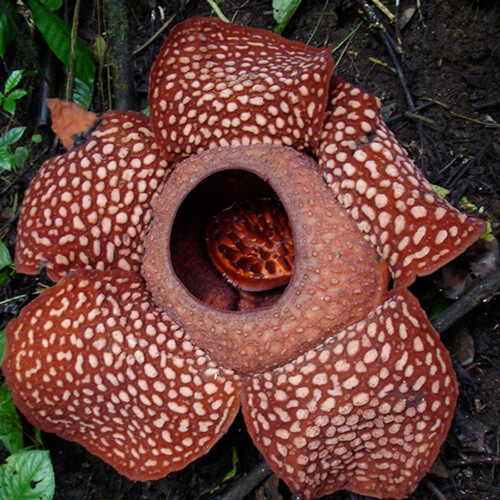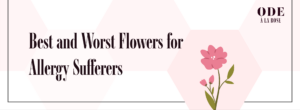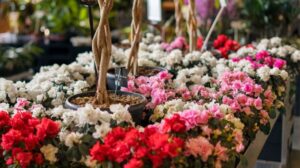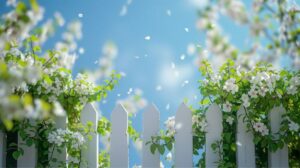They say beauty is in the eye of the beholder, but let’s be honest—not all flowers are universally adored. Some blooms have even earned the title of least favorite flowers due to their overpowering, unpleasant scents, eerie appearances, invasive nature, or negative symbolism. While they might be fascinating from a botanical standpoint, these unpopular flowers often struggle to find a place in home gardens or floral arrangements. Whether it’s their association with bad luck or their tendency to spread uncontrollably, certain flowers continue to be avoided by gardeners and florists alike.
But let’s give these flowers with bad reputations a fair shot. What makes specific blooms so undesirable? Why do some flowers trigger an instant “Nope!” reaction? And, more importantly, do they really deserve all the hate? Let’s dig into the world of disliked flowers and explore why they continue to intrigue (or repel) gardeners, florists, and flower lovers alike.
What Makes Flowers the Least Favorite Flowers?
Flowers don’t end up on the “least favorite flowers” list by accident. While personal preferences certainly play a role, some flowers seem almost universally disliked by everybody due to their characteristics. Whether it’s their bad smell, looks, or their habit of occupying our gardens, certain blooms have earned their place on this list. Here are the top reasons some flowers get snubbed:
- Overpowering Scents – A delicate fragrance? Lovely. A scent so strong it clears a room? Not so much. Some flowers release odors that can be overwhelming, or simply unbearably bad, making them difficult to enjoy indoors or in close proximity. What may attract pollinators in nature can be a sensory overload for humans, turning an otherwise beautiful bloom into something best admired from afar.
- Negative Symbolism – Throughout history, flowers have been used to convey emotions and messages, both good and bad. Some flowers are deeply associated with bad luck, mourning, or superstition, making them flowers to avoid in gardens or special occasions. Even if they are visually stunning, their unfortunate symbolism often prevents them from being included in joyful celebrations like weddings or birthdays.
- Invasive Growth – Some plants spread like a floral wildfire, taking over gardens and even damaging local ecosystems. A plant that refuses to stay contained can quickly go from a charming addition to a gardener’s worst nightmare. These aggressive growers can choke out native species, require constant maintenance, and even cause structural damage in extreme cases, making them highly undesirable despite their natural beauty.
- Unsettling Appearance – Beauty is subjective, but some flowers push the boundaries of what most people find attractive. Strange shapes, eerie colors, or carnivorous tendencies can make certain blooms undesirable to the average flower enthusiast. Whether it’s a plant that looks like a bat, a bloom that resembles decaying flesh, or a flower with tentacle-like appendages, some botanical oddities are just too bizarre for mainstream appreciation.
Whatever the reason, these floral misfits often find themselves on the list of flowers people hate. But just because they aren’t the most beloved doesn’t mean they don’t deserve a closer look.
Now, let’s meet the floral misfits that many people just can’t seem to love.
1. Flowers with Overpowering Scents
Apparently, beauty is useless if you don’t smell good! At least when it comes to flowers:
Corpse Flower (Amorphophallus titanum)
The corpse flower (Amorphophallus titanum) earns its name from the stench emitted by its bloom. While unpleasant to the human nose, the smell of decaying meat is actually advantageous to the plant. The odor will attract the types of carnivorous insects that serve as the plant’s pollinators. The flower has green petals with a deep red color on the inside. Emerging from the center of these petals is a fleshy stalk, which is actually covered in small flowers.
The corpse flower may have an unattractive olfactory presence, but its rarity makes it quite popular. The plant’s flower only blooms for a short time once every two to three years or even once every seven to 10 years. When the pungent plant does flower, it draws a crowd. Just this spring and summer, people flocked to see in bloom corpse flowers in Colorado, Florida, Illinois, Indiana, Missouri, New York and Washington, D.C. Perhaps even more interesting than the stench is this year’s oddly in sync schedule for the blooming flowers.
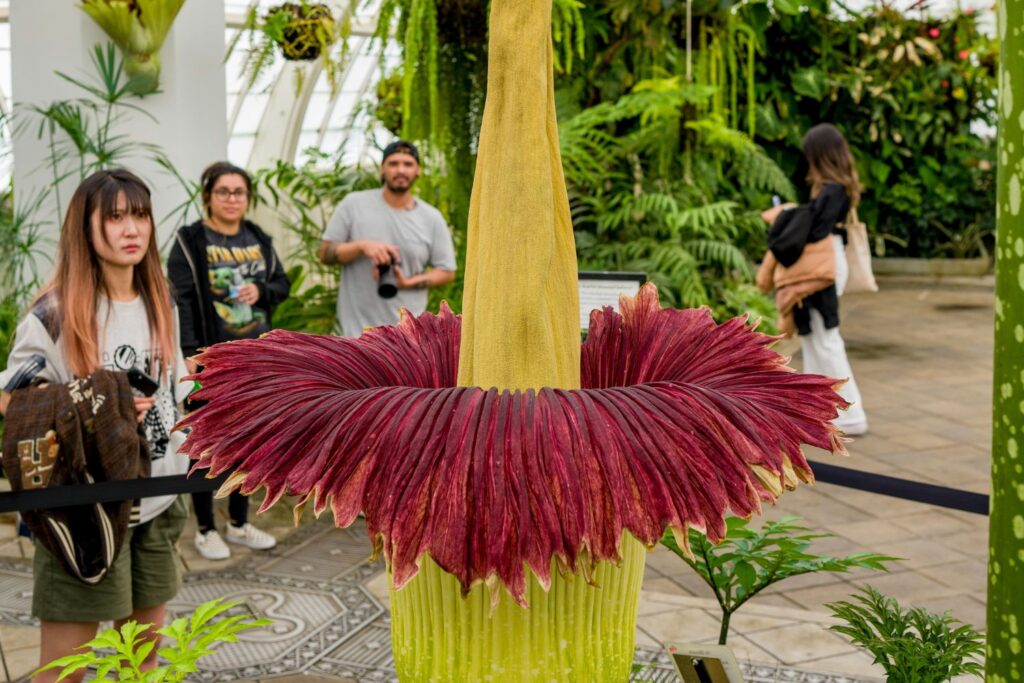
Rafflesia (Rafflesia arnoldii)
Rafflesia, a genus representing 28 different species, is unique in the plant world. The bloom consists solely of a large flower and nothing else, no stem, roots or leaves. Rafflesia, aptly called the monster flower genus, can reach a weight of 24 pounds and a length of a meter. The plant has five thick “petals” that come in shades of red or purplish brown and gives off the smell of carrion.
The genus Rafflesia includes the evocatively named stinking corpse lily (R. arnoldii), the single largest flower in the world. Like the corpse flower (Amorphophallus titanum), Rafflesia‘s distinctive odor attracts insects not for consumption, but likely for pollination purposes. The genus of enormous flowers is a parasitic group, gleaning nutrition from the roots of other plants.
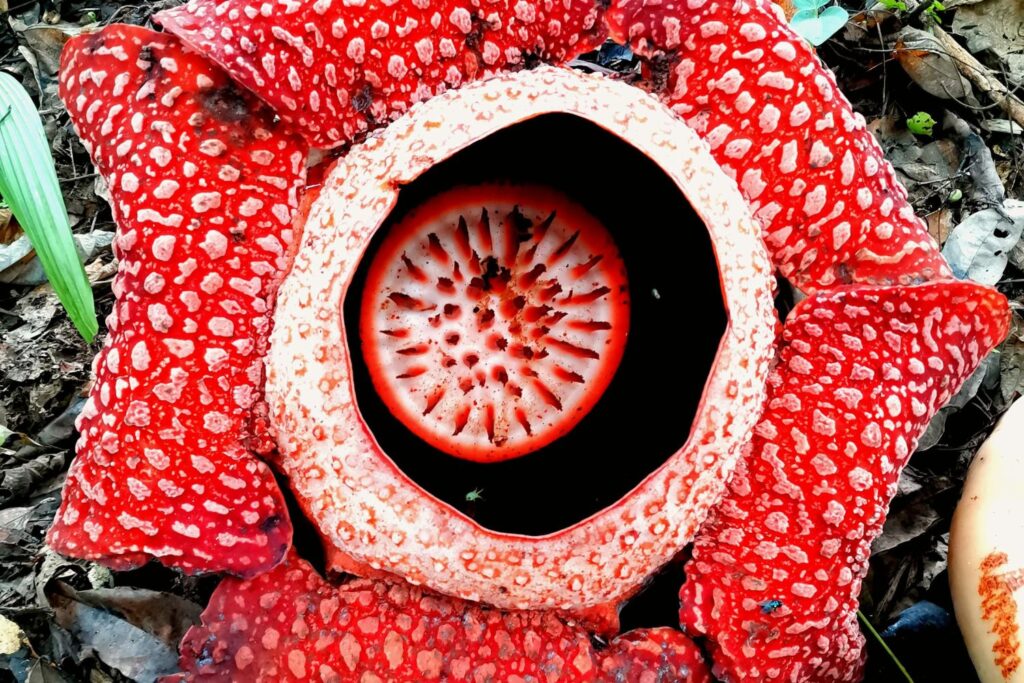
2. Flowers with Negative Symbolism
Some flowers are beautiful, but the symbolism that followers them is what will make you change your choice:
Black Bat Flower (Tacca chantrieri)
The black bat flower (Tacca chantrieri) looks exactly how it sounds. The way these flower’s black petals spread – up to a foot long – is reminiscent of their nocturnal namesake. Several long, thin leaves, also known as bracts, spring from the center of the flower, almost looking like black and maroon whiskers. The flower’s unique, if unsettling appearance, has earned it nicknames including cat’s whiskers and devil’s tongue. The plant can grow to be nearly three feet tall and bear up to 25 flowers. The black bat flower’s stem and leaves are thick and green with a smooth texture. You can find this plant thriving in the tropical forests of Southeast Asia.
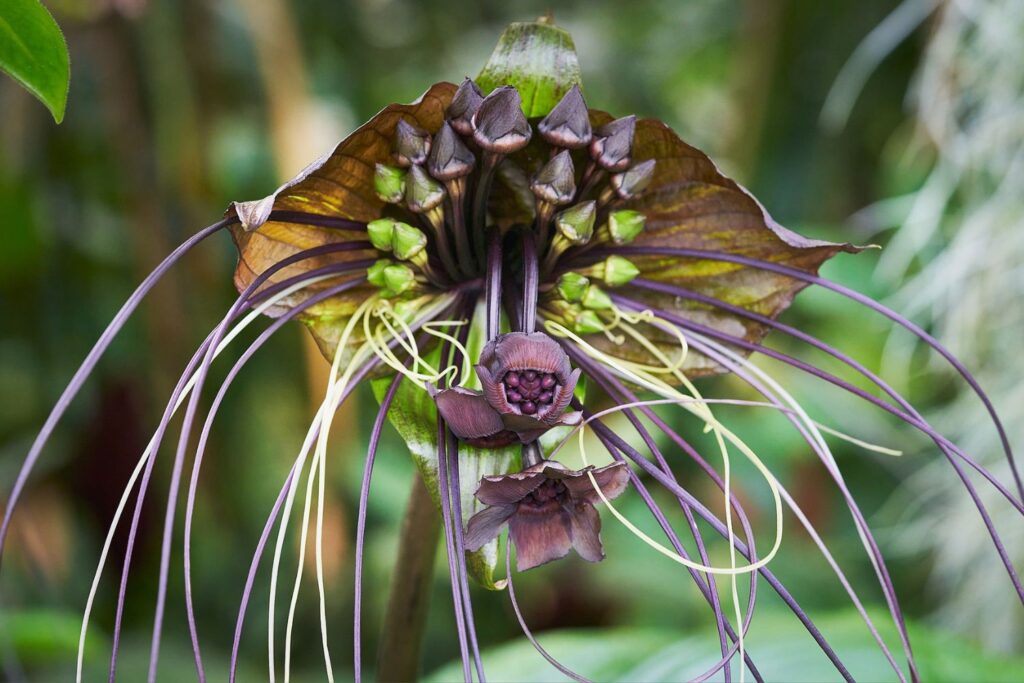
Marigolds (Tagetes spp.)
Bright and cheerful? Sure. But in many cultures, marigolds are deeply linked to death and mourning. They play a major role in Mexico’s Día de los Muertos celebrations and are used in funeral traditions worldwide. Because of this, they’re often considered flowers with negative meanings and are rarely chosen for weddings or joyful events. That said, they do have a silver lining—marigolds repel garden pests, making them incredibly useful despite their somber reputation.
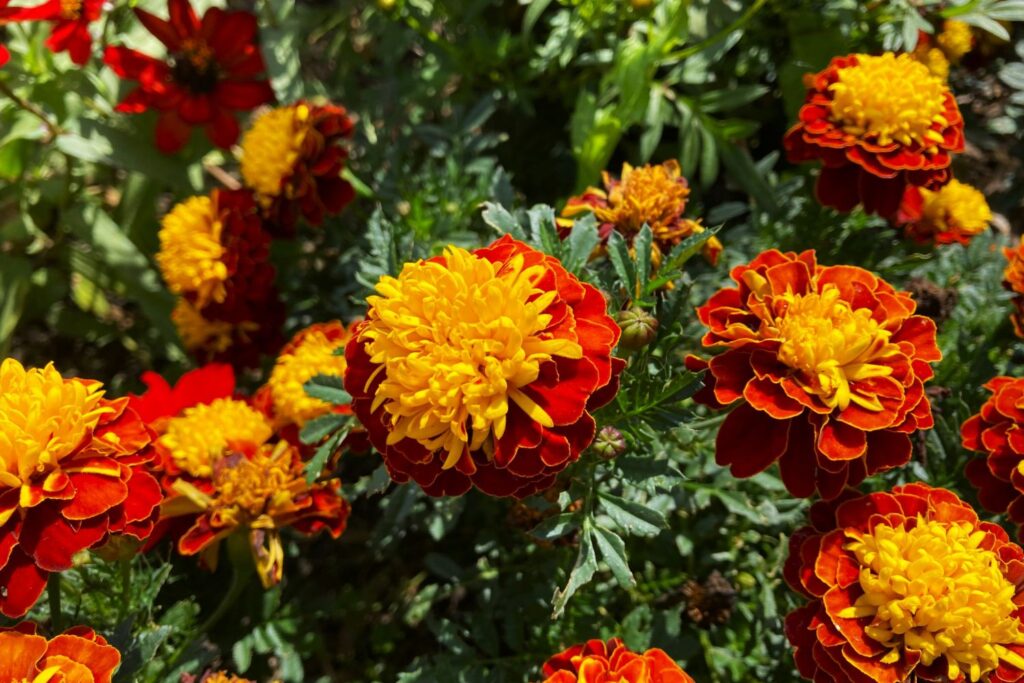
3. Invasive or Problematic Flowers
Some are just too much to handle:
Cobra Lily (Darlingtonia californica)
If you’ve ever harbored a vague distrust or outright fear of snakes, this flower is sure to top your list of plants to avoid. The cobra lily (Darlingtonia californica), a carnivorous plant, bears a striking resemblance to a hooded cobra. The plant’s appendages – coming in a variety of colors including purple – look much like fangs or a forked tongue, completing the picture. Though the cobra plant cannot bite an unwitting human, its hooded pitcher is the perfect trap for insects. After becoming trapped, prey will eventually fall to the bottom of the plant’s pitcher and to be broken down for the plant’s use with the help of bacteria. The cobra lily, also known as the California pitcher plant and cobra plant, can grow from 16 inches to over two feet tall. As its scientific name suggests, the cobra lily is native to California and the southern part of Oregon.
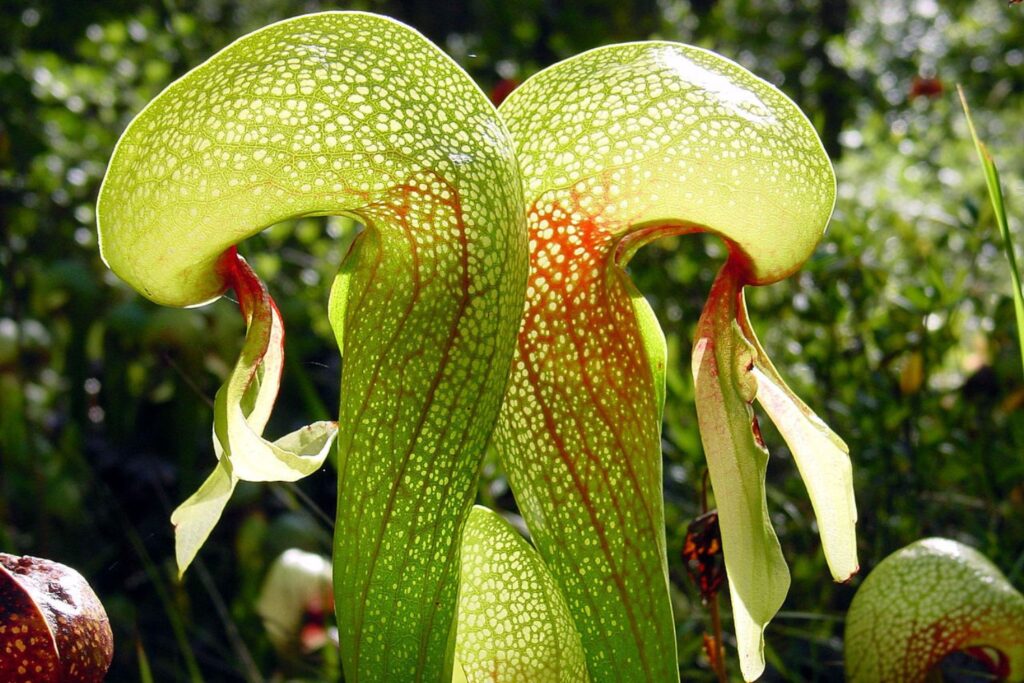
Japanese Knotweed (Reynoutria japonica)
Arguably the worst offender in this category, Japanese knotweed is one of the most destructive invasive species in the world. It spreads aggressively through underground rhizomes that can grow up to 10 feet deep, making it nearly impossible to eradicate. It can even damage buildings and infrastructure, earning it a reputation as one of the flowers people hate the most.
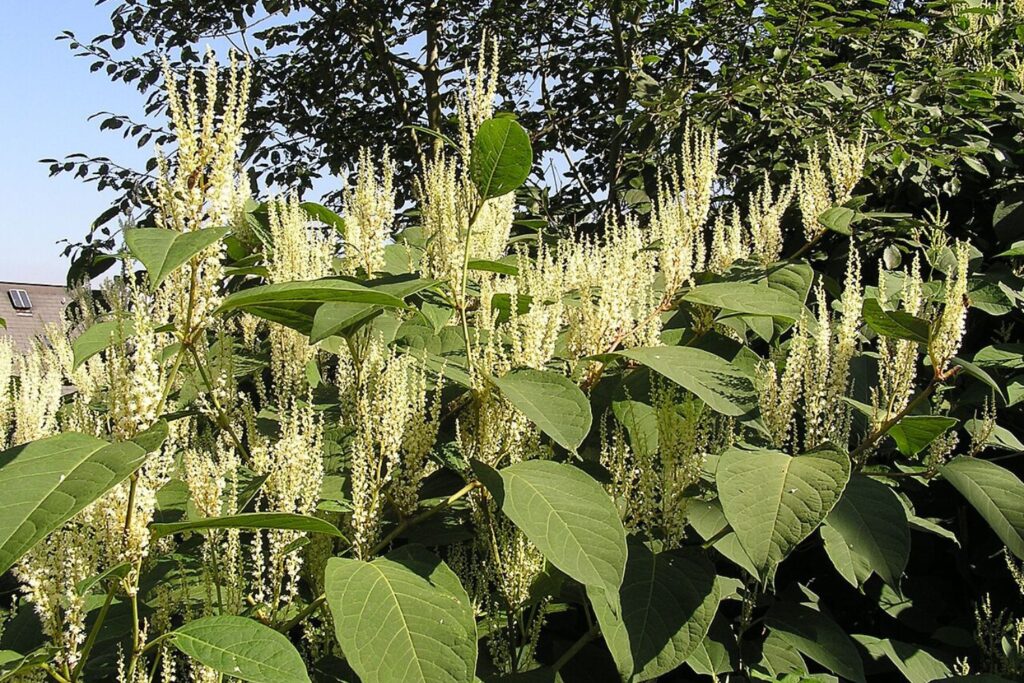
4. Flowers with Unsettling Aesthetics
In the end, everything comes to the looks, and these flowers just don’t deliver it:
Tropical Pitcher Plant (Nepenthes spp.)
Tropical pitcher plants, or genus Nepenthes, are another carnivorous addition to the list. The genus includes approximately 140 species, each with the signature pitcher-shaped trap that lures insects and other small prey. The soon-to-be meals are attracted to the trap by sweet nectar secreted by the tropical pitcher plant. Once landing, the prey will slip down the pitcher’s throat into a pool filled with digestive enzymes. These flowers, sometimes called monkey cups, are typically found across Southeast Asia, Australia and Madagascar. Unlike most flowers, the tropical pitcher plant has no petals. Instead, the plant has a long climbing stem, which culminates in its sticky trap.
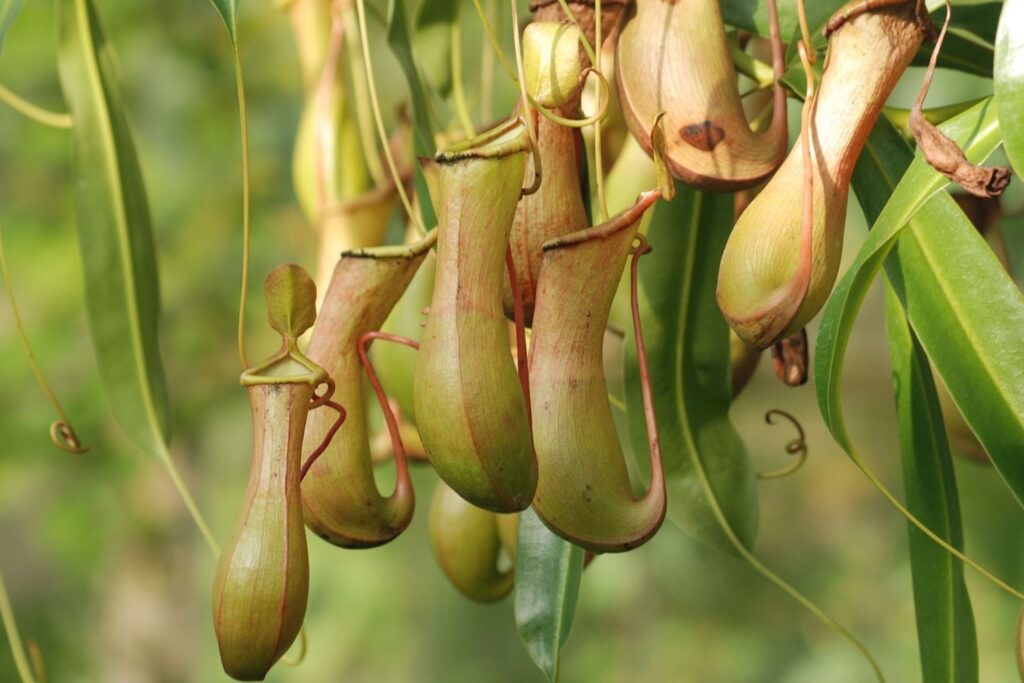
Welwitschia (Welwitschia mirabilis)
Welwitschia (W. mirabilis) doesn’t resemble a plant so much as some sort of strange, bedraggled sea creature left out to dry. The plant has a root system, stem and two leathery leaves. The leaves stay with the plant for its entire life, often becoming torn and well worn. The remarkable thing about welwitschia is just how long its life can last. These plants can live up to 1,500 years, unsurprisingly giving it the moniker of “living fossil.” The plant’s different sexes produce different colored flowering cones. Males bear a pink cone, while females have blue-green cones. Welwitschia lives in Africa’s Namib Desert.
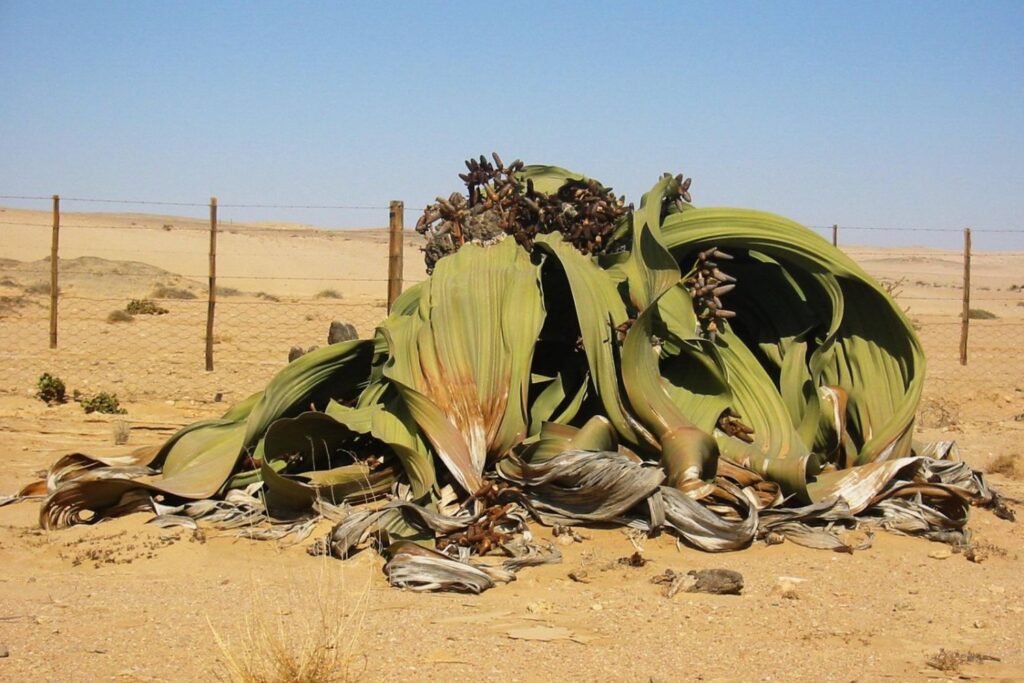
Can Least Favorite Flowers Still Be Appreciated?
Despite their bad reputations, these unpopular flowers aren’t entirely without merit. Many of them play important roles in their ecosystems—pollinating insects love them, they help maintain biodiversity, or they have unique medicinal properties.,
So while you might not want a bouquet of corpse flowers on your dining table (and we wouldn’t blame you), these blooms still deserve a little respect. After all, beauty isn’t everything—sometimes, the strangest flowers are the most fascinating.
Who knows? Maybe after learning about them, you’ll find a new appreciation for the world’s most disliked flowers—or at the very least, you’ll know which ones to avoid in your next floral arrangement!

